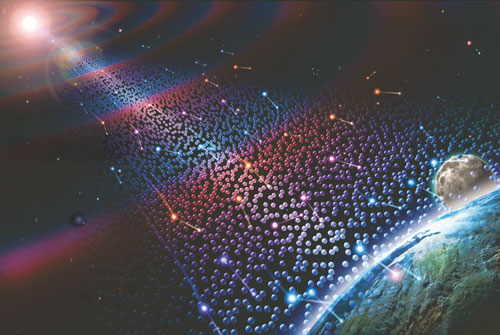It looks like you're using an Ad Blocker.
Please white-list or disable AboveTopSecret.com in your ad-blocking tool.
Thank you.
Some features of ATS will be disabled while you continue to use an ad-blocker.
5
share:
There was the big story a couple of weeks ago about finding gravitational waves for the first time.
And it got me thinking. What is gravity and where does it come from? From my prior research into neutrinos, I realized, gravity comes from neutrinos!
I will post my additional research, information, and connections more in this thread to soon come.
Here is this for now:

And it got me thinking. What is gravity and where does it come from? From my prior research into neutrinos, I realized, gravity comes from neutrinos!
I will post my additional research, information, and connections more in this thread to soon come.
Here is this for now:

edit on 20-2-2016 by neutrinostargate because: (no reason given)
a reply to: neutrinostargate
I'll be the first to admit that I'm no expert. But I did stay at a holiday Inn last night.
It seems to me though, that it's counterintuitive that gravity would come from a partical that essentially has no mass and passes through all matter virtually undetected and unnoticed.
But I'm intrigued and will await your evidence.
I'll be the first to admit that I'm no expert. But I did stay at a holiday Inn last night.
It seems to me though, that it's counterintuitive that gravity would come from a partical that essentially has no mass and passes through all matter virtually undetected and unnoticed.
But I'm intrigued and will await your evidence.
Gravity Emerges…From Neutrinos
blogs.discovermagazine.com...
One of the great mysteries of modern physics is why gravity is so much weaker than the other forces (strong, electromagnetic, and weak). Many great minds have worked to incorporate gravity into the same sort of relativistic quantum field theory that we use to describe the other three, and have failed more or less utterly for decades. Is there something fundamentally different about gravity? Einstein’s general relativity, which links gravity to the warping of spacetime in the presence of matter and energy, is extremely successful in accounting for a wide variety of phenomena from very short (millimeter) to very long (solar system) distance scales.
Bob’s short paper, presumably a precursor to a much longer and complete description of his work, brings together several different lines of thought from different subfields of physics, including particle physics and condensed matter, to propose a new theory of how gravity arises. In a single sentence, it goes like this: What we know as gravity is actually the result of interactions with relic neutrinos, which satisfy all the conditions necessary to form a superfluid once the universe has expanded sufficiently. Oh, and another sentence, this time from his concluding paragraph:
“…WIMP dark matter scenarios are inconsistent: WIMPs cannot both be decoupled and localized for the age of the universe.”
That is to say, we cannot have dark matter particles of mass of the usual magnitude (the 100 GeV scale) and expect them to behave classically for the age of the universe.
Bob has given a number of talks on his ideas, and tells me that it’s gone well so far – there have been no real show-stoppers raised. The whole picture has a certain compelling nature to it: there must be relic neutrinos (if the Big Bang expansion of the universe is correct), and if so, they must form a superfluid, the condensate of which leads to Goldstone bosons that can be identified with spin-2 gravitons.
blogs.discovermagazine.com...
edit on 20-2-2016 by neutrinostargate
because: (no reason given)
Relic neutrinos are a candidate for dark matter, they are being searched for but so far there has been little evidence for them.
Still the search continues. This i believe would be a right handed super partner responsible for the seesaw mechanism that gives neutrinos very very small mass. Agers since i studied it, but ya, Relics are not a new idea, they are one of many ideas.
Also if it is a regular neutrino, detectors around the world would have observed the event... easily...
Still the search continues. This i believe would be a right handed super partner responsible for the seesaw mechanism that gives neutrinos very very small mass. Agers since i studied it, but ya, Relics are not a new idea, they are one of many ideas.
Also if it is a regular neutrino, detectors around the world would have observed the event... easily...
edit on 21-2-2016 by ErosA433 because:
(no reason given)
Gravity Arises from the bending of space-time caused by matter. There are some theory's about a particle called Gravitons that are responsible for
gravity, but its still just theorized. en.wikipedia.org...
The best i can tell neutrinos, while very interesting have nothing to do with causing gravity its self
The best i can tell neutrinos, while very interesting have nothing to do with causing gravity its self
So your "research" has lead you to this theory? Got any maths to show? Because I can assure you that no one is doing particle physics propely without
getting knee deep in equations and maths.
new topics
-
Cold Blooded Killers on Christmas!! GRRRRrrr!!
Pets: 3 hours ago -
Plane Crash Today --Azerbaijanian E190 passenger jet
Mainstream News: 8 hours ago
top topics
-
Orange County Makes Shoplifting a Felony
Other Current Events: 12 hours ago, 17 flags -
It's Offical Now
US Political Madness: 14 hours ago, 15 flags -
The reason it works is.....
General Chit Chat: 15 hours ago, 8 flags -
Dick Van Dyke saved from Wildfire by neighbours on his 99th birthday
People: 17 hours ago, 7 flags -
Cold Blooded Killers on Christmas!! GRRRRrrr!!
Pets: 3 hours ago, 7 flags -
Plane Crash Today --Azerbaijanian E190 passenger jet
Mainstream News: 8 hours ago, 6 flags
5
